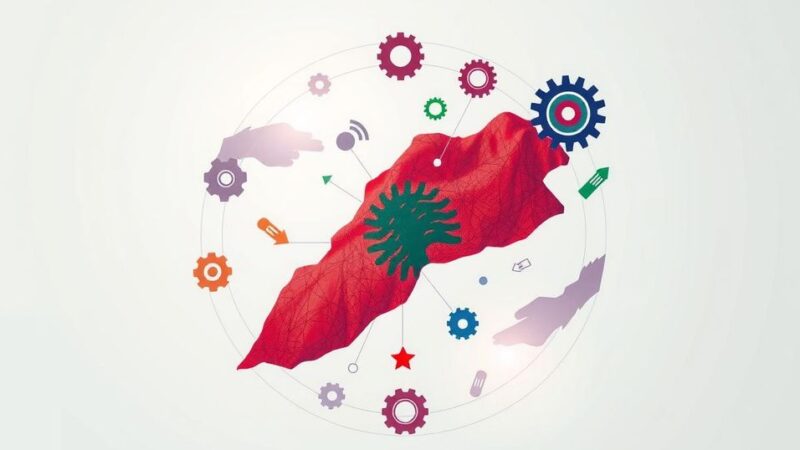The article explores Russia’s strategic eastward orientation as it seeks to consolidate its geopolitical and economic position ahead of Donald Trump’s second presidency. President Putin’s engagement with Kazakhstan highlights efforts to strengthen security cooperation and enhance regional trade, amidst challenges posed by sanctions and military conflicts. A newly formulated three-step strategy aims to bolster economic ties and deepen integration within the Eurasian region.
In light of the anticipated return of Donald Trump to the presidency, Russia is strategically pivoting eastward to bolster its geopolitical and economic positioning. President Vladimir Putin’s recent diplomatic engagement with Kazakhstan underlines Russia’s aspiration to foster cooperation and develop a new defense and security framework in the region. Academic experts, such as Yerkin Nazarbay, provide insights into these ambitions, notably amidst the evolving global political landscape following the recent U.S. elections.
On November 27, 2024, only weeks after President-elect Trump pledged to usher in what he termed the “golden age of America,” Putin arrived in Astana for strategic discussions. The focus of these talks was the enhancement of the Collective Security Treaty Organization (CSTO) and the integration of the Eurasian Economic Union (EAEU) to foster regional stability and competitiveness. Russia seeks to leverage Trump’s administration as an opportunity to revitalize its light industry and stimulate domestic demand, thereby strengthening its economic framework.
The changing dynamics of global power, marked by intensified ideological confrontations and shifts in trade patterns, compel Russia to diversify its economic strategies. Although facing significant sanctions and an ongoing war since 2022, Russia aims to fortify its manufacturing status by enhancing economic connectivity with countries like Kazakhstan and Uzbekistan. An urgent priority lies in improving economic circulation within western Siberia, which is pivotal to Russia’s aspirations of reasserting its role as a global manufacturing power.
Despite past tensions, particularly regarding territorial disputes and the anxiety surrounding Russian military involvements in neighboring states, Kazakhstan’s leadership remains committed to bilateral cooperation. President Kassym-Jomart Tokayev has asserted the absence of disputed matters between the two nations, emphasizing the Russian language’s role as a cultural bridge.
Putin’s public assurances during official meetings aimed to quell fears of conflict spilling over into Central Asia, maintaining that Russia remains focused on sustaining its strategic interests in the region. To that end, he has introduced a three-step development strategy designed to enhance collective security and economic integration while mitigating external pressures from the West.
The initial phase of this strategy advocates for the formation of a fortified, centralized defensive system across critical borders, while subsequent steps aim to bolster internal defense networks and promote economic ties between Russia, Kazakhstan, and Mongolia. Through these concerted efforts, Russia seeks to regain momentum and mitigate risks associated with the impending changes ushered in by Trump’s anticipated policies.
The article discusses Russia’s geopolitical strategies in light of the impending return of Donald Trump to the U.S. presidency. With a focus on Russia’s diplomatic outreach and military cooperation initiatives, particularly with Kazakhstan, it explores how these efforts align with Russia’s broader objectives of enhancing its economic stability and influence in Eurasia. The context includes historical tensions, recent sanctions affecting Russia, and the necessity for regional integration amidst a shifting international landscape.
In summary, Russia’s eastward push is a calculated response to the geopolitical shifts anticipated with Trump’s return to power. By fostering deeper ties with Kazakhstan and integrating its economic mechanisms, Russia aims to fortify its international standing while addressing ongoing sanctions and military pressures. Through a well-structured strategic framework, Russia seeks to revitalize its industrial capabilities and reinforce its influence across Eurasia, underscoring the urgency of its geopolitical ambitions.
Original Source: www.thinkchina.sg





